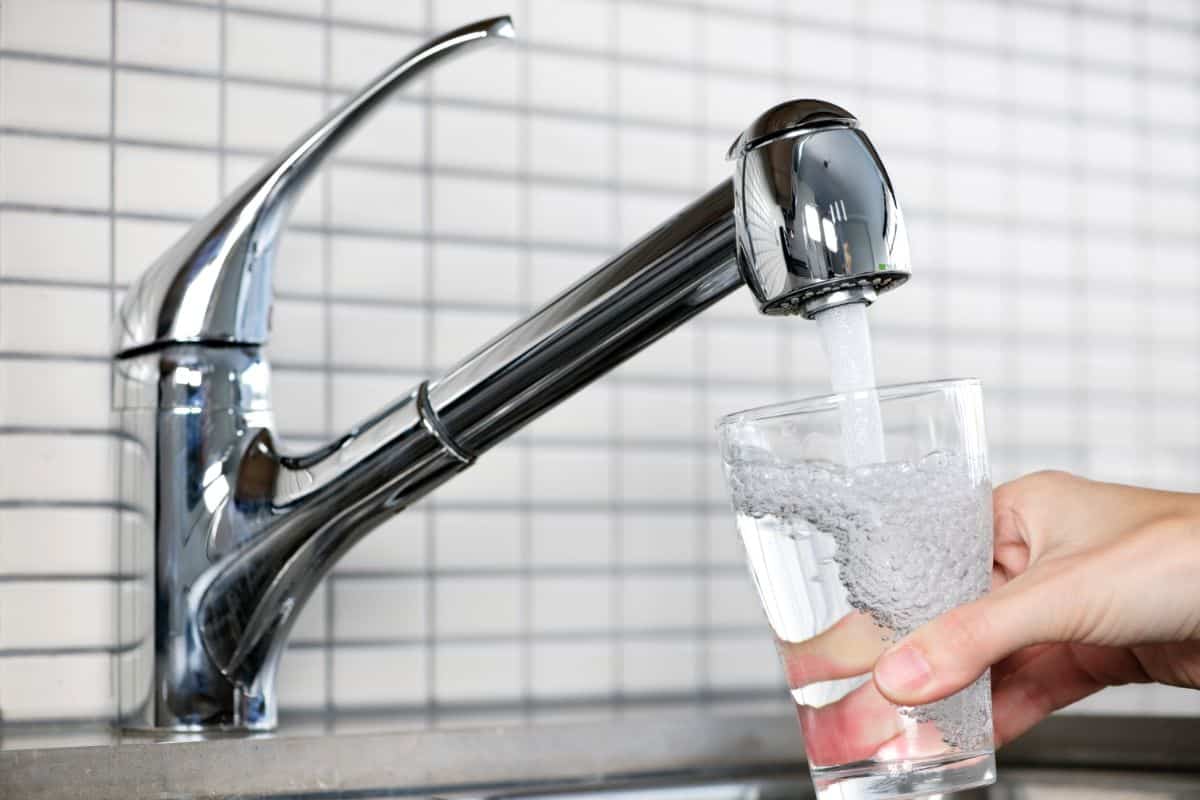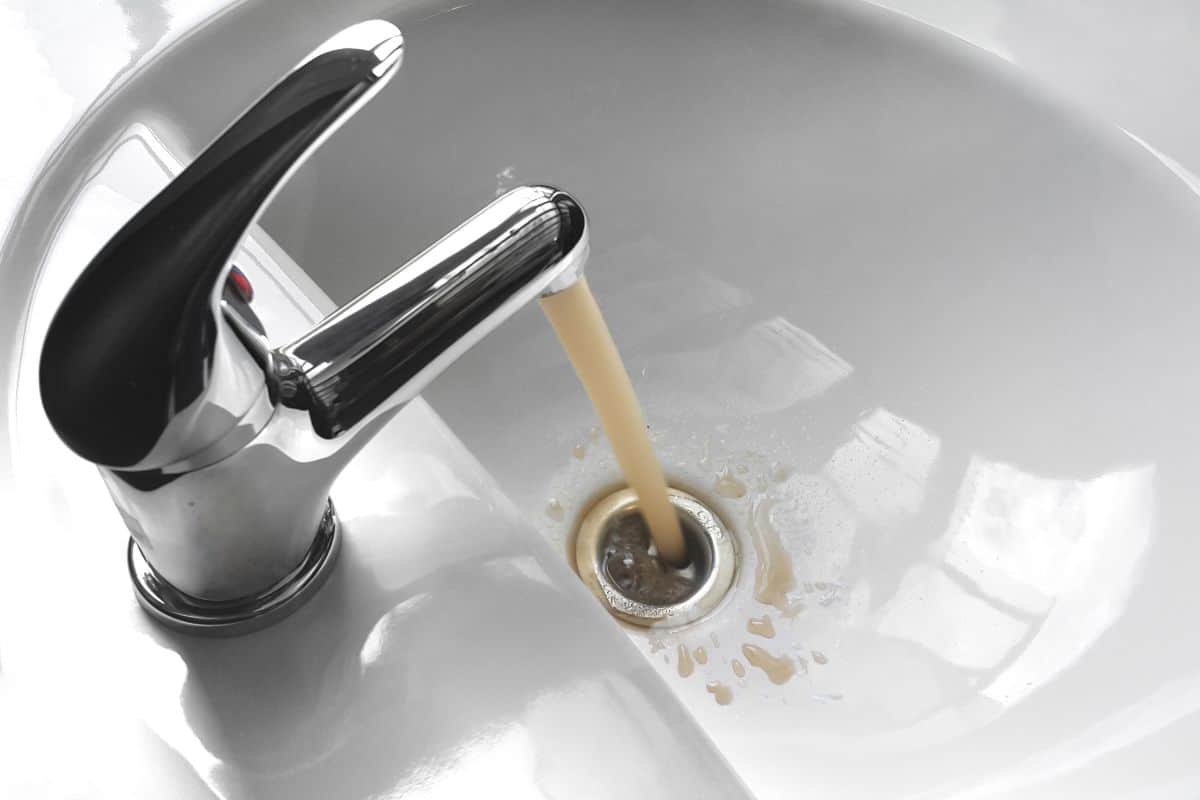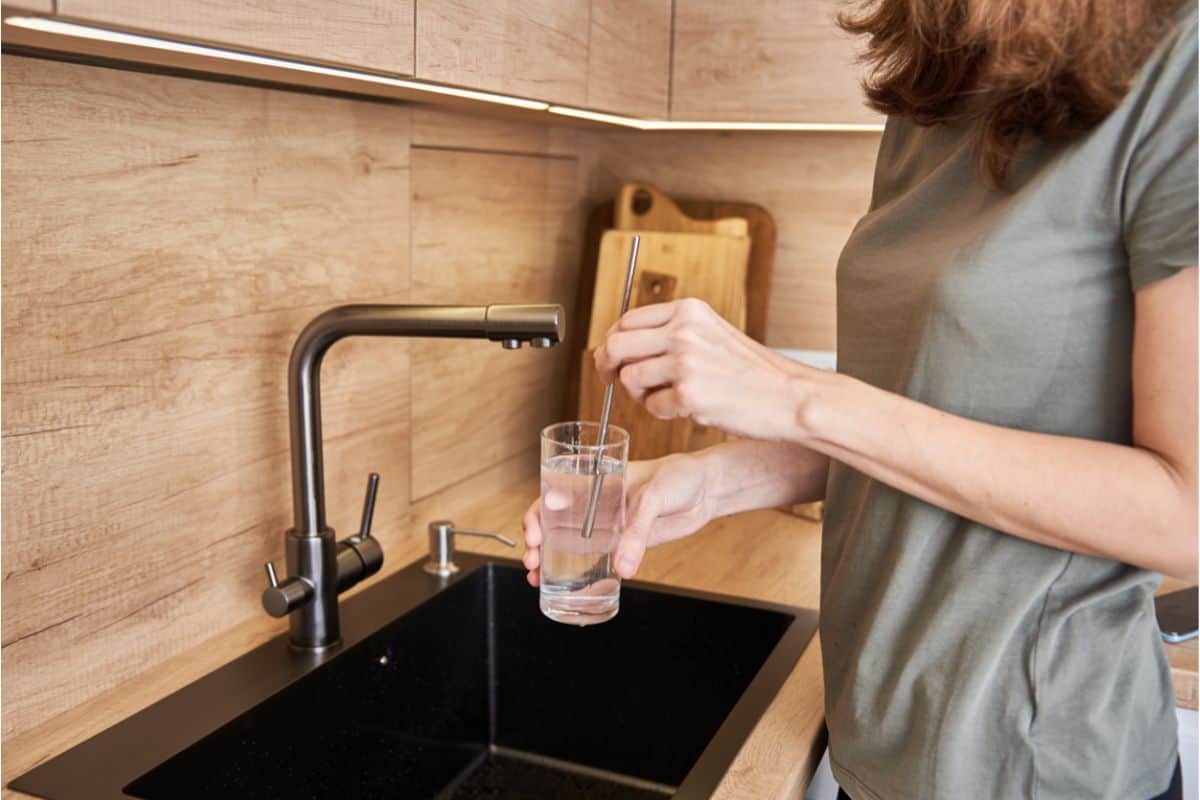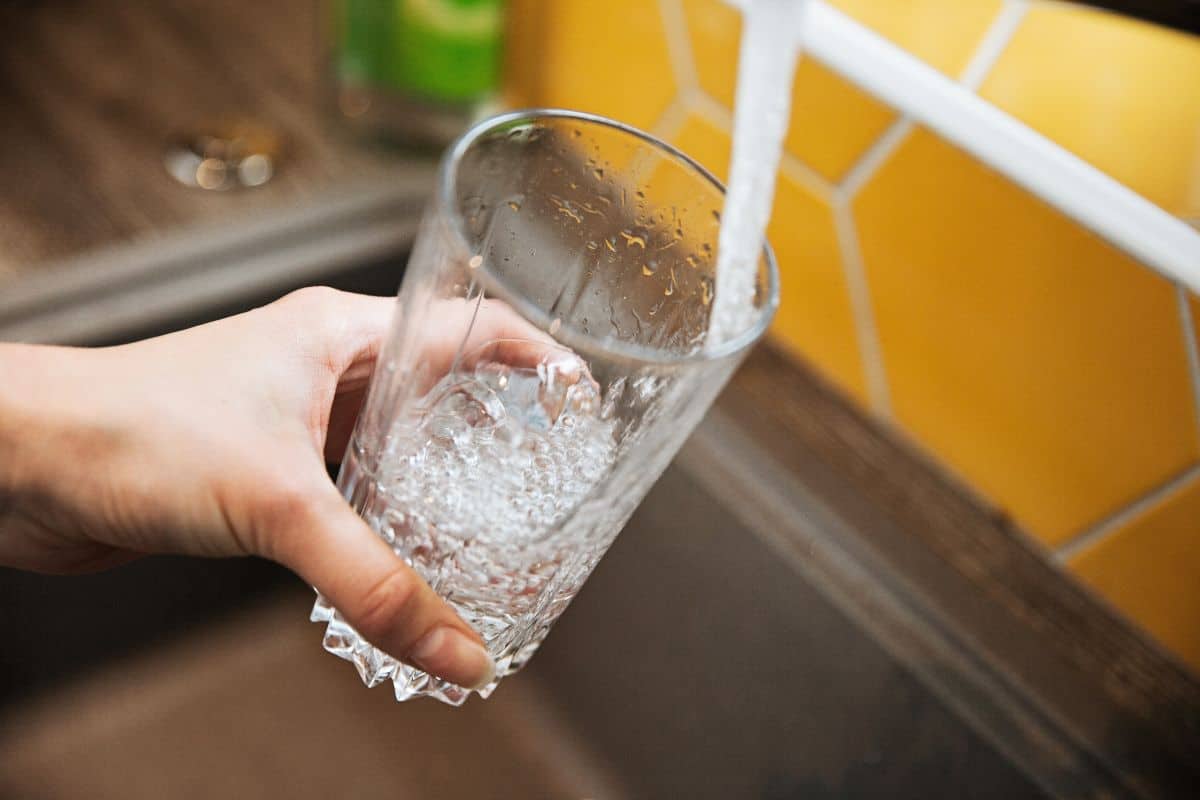It is no secret that water is vital for everyone’s health and wellbeing. Therefore, reliable and clean access to water is really important.
However, changes in the water’s color can make you anxious about the quality and safety of the water you are drinking. One of the changes you may notice is white water coming out of your faucet.
There are many reasons for this. Although, most of the time, this whiteness or cloudiness won’t pose any risks to your health and is usually the result of excess bubbles.
To settle any doubts you may be having, we have created a complete guide exploring the question: why is my tap water white?
Contents
What causes white water?
As previously mentioned, the main cause of white tap water is a result of excess air bubbles found in your main water supply or pipes.
Once the faucet is switched on, all the built-up pressure is released causing the water to appear white.
Yes, this is completely safe to drink.
Other reasons why your water is white
Hard water cause white water
You may notice white water coming out of your faucet if you have hard water. Below, you will find some signs to tell whether or not you have hard water.
- When water is in a glass, the whiteness doesn’t clear up.
- White spots are noticeable on your utensils after cleaning.
- Clothes are stained and you’re using more laundry detergent.
- There is a buildup of mineral deposits on your water appliances.
To avoid this, you can confer with a professional about installing a water softener unit. This would fix hard water by preventing excess minerals from entering the water, making it safer and cleaner to drink.
High concentration of total suspended solids (TSS)
Total Suspended Solids refer to particles that linger and don’t settle down in the water. For instance, this includes algae, silt, manganese, iron, and others.
These particles can provoke unusual cloudiness or whiteness coming out of your faucet, which can lead to bacterial growth.
To remove these suspended solids, you can utilize a whole house water filter system.
The hot water heater
White water can also be caused by any excess air trapped in the water heater. Since heated water increases the speed at which trapped air is released.
Repair works
If your local water company is carrying out repairs on the water distribution system, then you are more likely to notice a difference.
In these cases, the water coming out of your faucet may appear white or cloudy. However, not to worry, as once the repairs are complete; your water should return back to normal.
Particles
White water can also be caused by an accumulation of sediments or particles that make their way into the water system.
If the filtration system is not effective, small particles such as sand or grit can enter the water, creating a whiteness in water.
Likewise, poorly maintained wells can also contribute to discolored water. These particles settle down on the floor of the well, creating cloudiness or whiteness in the water thus making well water “hard”. To avoid this, you can install a sediment filter.
Water pressure
Water produced from treatment plants is typically pressurized in order to travel to many different destinations (homes). When under pressure, water can carry a lot of excess air.
As a result, when the water comes out of your faucet it is no longer pressurized, making the air from the bubbles look as though it is carbonated.
If this happens to you, the best way to deal with it would be to store your water in a container, before drinking, as this will allow the bubbles to naturally disappear.
Methane gas
Methane gas can also cause your water to turn white. This is more common in wells that are placed in regions that produce gas or oil.
Methane is odorless, colorless, tasteless, and combustible. Therefore, detecting its presence in water can sometimes be tricky. Since methane found in water acts similarly to trapped air in water.
It produces air bubbles that rise upwards and then disappear. This can easily be confused with simple air bubbles.
To remove methane, you’ll need a well-ventilated aeration water system since methane is highly flammable.
As previously mentioned, if you’re ever in doubt about the safety or quality of your water, you should get your water tested for peace of mind.
Is white water safe to drink?
If you notice any discoloration in your water, you should always take appropriate action to deal with the issue. However, drinking white water that is the cause of trapped air will likely not cause any health problems.
Simply allow your water to rest for a few minutes and your water will clear up naturally. However, if the water coming out of your faucet is green, brown, or yellow, these could be signs of contamination.
White-colored water that is caused by hard water can produce a build-up of minerals on pipes, and fixtures, decrease the efficiency of laundry detergents and shorten the lifespan of water appliances.
However, having said that, hard water isn’t bad. Quite the opposite; it is an essential mineral needed in the body. The only issue is its effect on appliances. As a result, many people prefer to install water filters and softeners.
There are various different reasons why your water can be discolored. Therefore, the general rule of thumb is that if you’re unsure, you should get your water tested.
Final thoughts
Any discoloration in your water is always a cause for concern among homeowners. Although, this doesn’t always mean that it is always unsafe to drink. If your water features a white color, it could simply be due to excess air bubbles.
Nonetheless, if you’re concerned about the quality of your water, it’s a good idea to get it tested. Hopefully, this guide has informed you on why your tap water is white.







